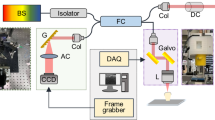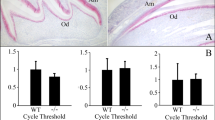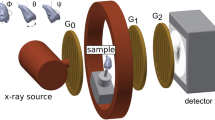Abstract
THE surface of the developing dental enamel of the manatee (Trichecus latirostris) and the monkey (Rhesus macacus) has been examined directly in a scanning electron microscope. Molar tooth germs were dissected from the jaws of these animals soon after death. Specimens were prepared by gently stripping off the enamel organ from the surface of the developing tooth, thus exposing the developing front of the enamel. The pulp was then removed from the centre of the developing tooth, which was divided into convenient portions and allowed to dry. These portions were fixed with ‘Araldite’ adhesive to aluminium specimen stubs leaving the enamel side exposed. The specimens were finally covered with a 300-Å thick layer of aluminium to render their surfaces conducting. They were examined in a scanning electron microscope (a developmental model built by the Cambridge Instrument Co., Cambridge, England). The micrographs were taken with a 15-kV scanning electron beam and only the high-energy reflected electrons were used to form the images.
This is a preview of subscription content, access via your institution
Access options
Subscribe to this journal
Receive 51 print issues and online access
$199.00 per year
only $3.90 per issue
Buy this article
- Purchase on Springer Link
- Instant access to full article PDF
Prices may be subject to local taxes which are calculated during checkout
Similar content being viewed by others
Author information
Authors and Affiliations
Rights and permissions
About this article
Cite this article
BOYDE, A., STEWART, A. Scanning Electron Microscopy of the Surface of Developing Mammalian Dental Enamel. Nature 198, 1102–1103 (1963). https://doi.org/10.1038/1981102a0
Issue Date:
DOI: https://doi.org/10.1038/1981102a0
This article is cited by
-
MMP20-generated amelogenin cleavage products prevent formation of fan-shaped enamel malformations
Scientific Reports (2021)
-
Crystallographic texture and mineral concentration quantification of developing and mature human incisal enamel
Scientific Reports (2018)
-
On the possibilities of application of scanning electron microscopy in the forensic medicine
Zeitschrift für Rechtsmedizin (1977)
-
Scanning electron microscopy of lamellar bone
Zeitschrift f�r Zellforschung und Mikroskopische Anatomie (1968)
-
Correlation of ameloblast size with enamel prism Pattern: use of scanning electron microscope to make surface area measurements
Zeitschrift f�r Zellforschung und Mikroskopische Anatomie (1968)
Comments
By submitting a comment you agree to abide by our Terms and Community Guidelines. If you find something abusive or that does not comply with our terms or guidelines please flag it as inappropriate.



